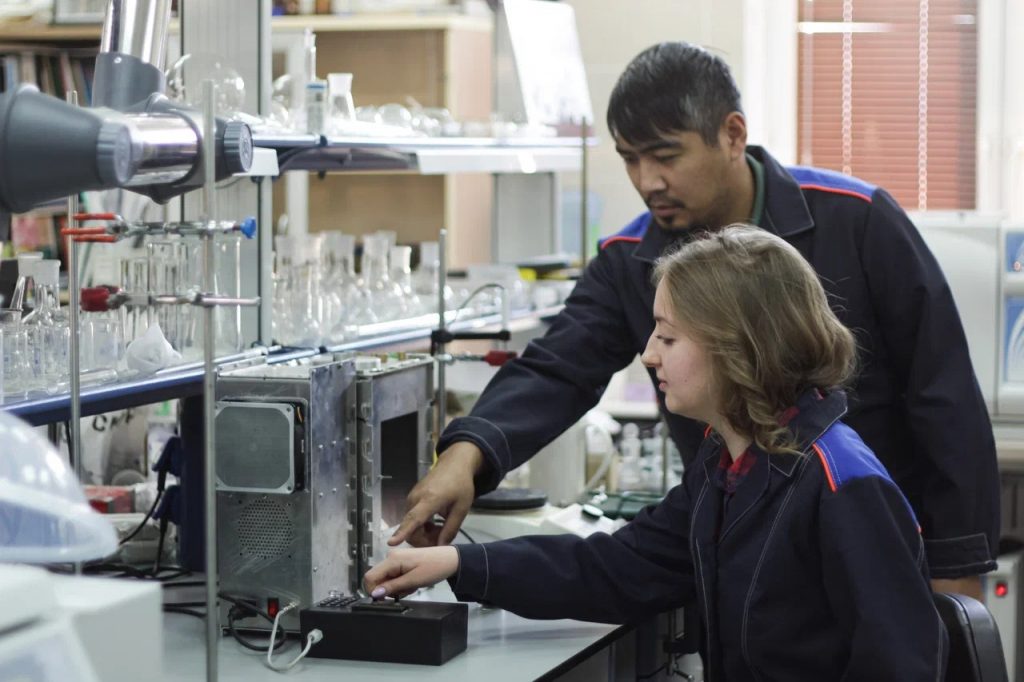Grant winner Igor Guryanov to contribute to chemotherapy substance research

Kazan Federal University will create a system for delivering prodigiosin and resveratrol based on cellular microvesicles for drug therapy of oncological diseases. The development of Ivan Guryanov, Lead Research Associate at the Molecular Immunology Laboratory of the Institute of Fundamental Medicine and Biology, is supported by a grant from the Russian Science Foundation.
Eight million new cases of malignant neoplasms and more than 5.2 million deaths from them are registered annually in the world, which makes cancer therapy and its prevention an important socio-economic issue. The variety of effective chemotherapy agents for the treatment of neoplasms is limited and requires a search for new solutions, says Guryanov.
“Existing chemotherapy methods often have toxic side effects on adjacent healthy cells and tissues, are insufficiently stable when administered to the body, or are ineffective due to the development of drug resistance in a portion of the tumor cell population. Strategies for addressing the issue of the safety of drugs used in chemotherapy may be aimed at finding new substances with selective action or creating special delivery systems for existing effective anti-tumor drugs,” the biologist explains.
One of the natural compounds capable of inhibiting the proliferation of cancer cells and limiting the development of metastases is prodigiosin, a heterocyclic tripyrrole, a bright red pigment synthesized as a secondary metabolite by some microorganisms. Resveratrol is a natural non-flavonoid polyphenol, a phytoestrogen with antioxidant, anti-inflammatory, cardioprotective, and anticancer properties.
The goal of the project is to create a new comprehensive approach to solving the problem of targeted delivery of prodigiosin and resveratrol based on cellular microvesicles for drug therapy of oncological diseases. Extracellular microvesicles are a more physiologically compatible form of drug delivery, as they are formed from the cells of the body itself, “Our previous studies of the selective cytotoxic effect of prodigiosin in halloysite nanotubes demonstrated an increase in the anti-tumor activity of this pigment due to loading into mineral nanotubes, which made it possible to overcome some of the limitations associated with the hydrophobicity of prodigiosin.”
As the scientist notes, although the anti-tumor activity of prodigiosin and resveratrol has already been tested separately earlier, the synergism of drugs encapsulated in microvesicles will be carried out for the first time. Currently, this issue remains relatively poorly understood and is at the initial stage of research.
“It has been reported that resveratrol can reverse the multidrug resistance of cancer cells, and thus its combination with clinically used drugs can increase the sensitivity of cancer cells to them. Data from various clinical trials demonstrate that resveratrol is a promising therapeutic and chemopreventive agent. Resveratrol, like prodigiosin, has poor solubility in water, low chemical stability, a short biological half-life, and poor absorption and limited delivery to tumor cells reduce its clinical utility. The combined use of prodigiosin and resveratrol will be carried out for the first time,” emphasizes the young scientist.
It is expected that the microvesicle-based delivery system for the combined use of prodigiosin and resveratrol, being developed at KFU, will likely improve the effectiveness of chemotherapy treatment of oncological diseases.
“In combination with vesicular delivery systems, the limitations associated with the hydrophobicity of drugs can be overcome. In addition, after modification, microvesicles can ensure the safety of chemotherapy due to more precise, targeted action of drugs directly in the tumor matrix. When used together, resveratrol in microvesicles can reduce the associated side effects of prodigiosin, while increasing its antitumor effectiveness,” Guryanov adds.
It should be noted that the size of one grant is up to 1.5 million rubles annually. The main part of the grant allocated for the implementation of Guryanov’s project will be used to purchase the necessary consumables and reagents to perform the work, as well as to pay for the research.

